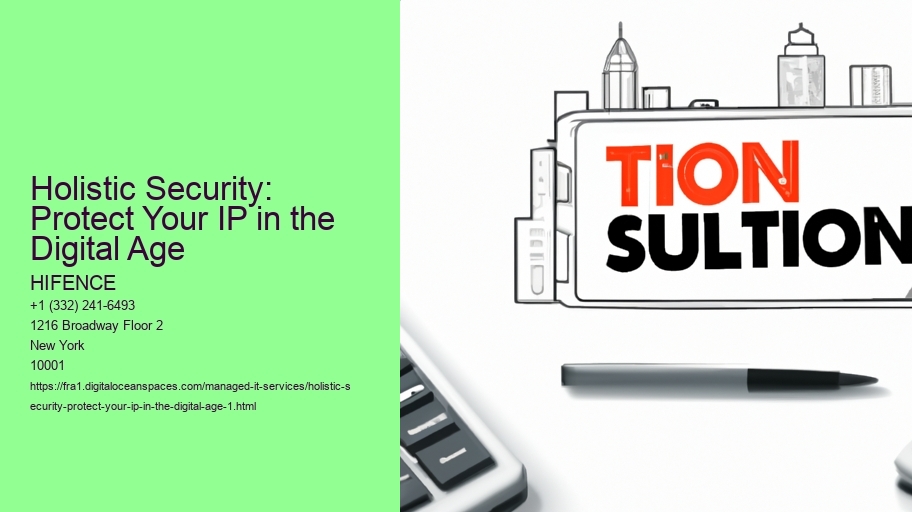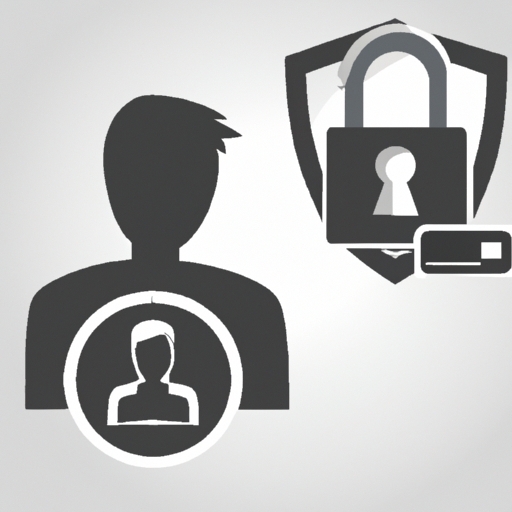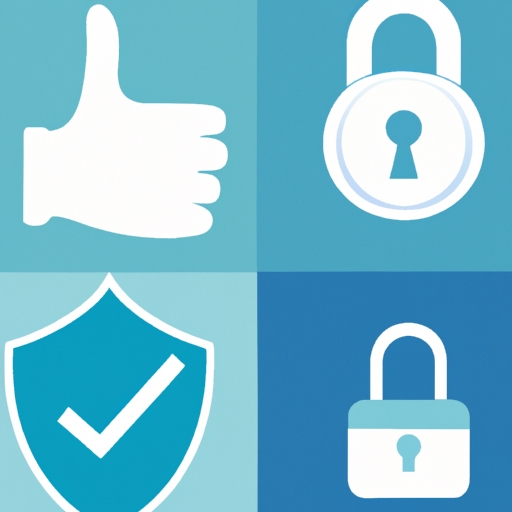
Okay, so, like, understanding digital IP theft? Holistic Security: Layered Security for Max Impact . Its kinda crucial if you want to, ya know, actually protect your stuff in this digital age. Think of it like this: your intellectual property (IP) – your ideas, your designs, that killer app youve been slaving over – is like your garden. Beautiful, right? But digital IP theft is like a bunch of sneaky digital slugs (or worse, sophisticated thieves with power tools) trying to munch on your prize-winning roses.
The "landscape" is all the different ways they can get at it. Its not just hacking, though thats a biggie. Its also things like employees walking off with trade secrets (ouch!), competitors straight-up copying your website (the nerve!), and even just accidental data leaks. (Oops! Did I leave that sensitive doc on the coffee shop wifi?)
And its not always as obvious as someone selling your code online. Sometimes its subtle.
So, to protect yourself holistically, you gotta get a handle on all these angles. You need good security practices (strong passwords, two-factor authentication, the whole shebang). You also need to educate your employees – make sure they know what IP is, how important it is, and how not to accidentally give it away. And you probably want to invest in some kind of monitoring system to keep an eye out for suspicious activity.
Its a constant battle, honestly. The bad guys are always figuring out new ways to steal stuff. But if you understand the landscape – all the different threats and vulnerabilities – youre way more likely to actually keep your digital garden safe (and profitable!). Its a bit overwhelming, sure, but so worth it in the long run.
Okay, so, like, when were talkin bout keepin your brilliant ideas safe in this crazy digital world (aka, Holistic Security: Protect Your IP in the Digital Age), we gotta think bout where things can go wrong, right? I mean, where are the Key Areas of Vulnerability for Intellectual Property? Its not just one big thing, its like, a bunch of little cracks in the wall.
First off, and this is a biggie, is unsecure networks.

Then, theres the insider threat. This is like, a disgruntled employee (or even just a careless one) who has access to your super-secret stuff. They could leak it, sell it, or just accidentally, like, email it to the wrong person. Whoops! Background checks and access controls are like, super important here, and train them better.
Software vulnerabilities, oh boy! If youre usin outdated software or software with known bugs, youre basically invitin hackers to come on in. Keep everything updated, and maybe, you know, invest in some decent security software, OK?
Phishing scams is another area where things go wrong. Those emails that look super official but are actually tryin to steal your login info? Yeah, those. One click on the wrong link, and your intellectual property could be compromised. Be careful out there, dont trust everything you see even if the email looks legit.

And lastly, theres the cloud. Storing your stuff in the cloud is convenient, sure, but you gotta make sure your cloud provider has good security. Read the fine print and understand their security protocols. Because if they get hacked, your IP could be at risk too.
So yeah, lots of places where things can go sideways, but keeping an eye on these key areas of vulnerability is the first step to protecting your intellectual property in the digital age. Its like, a constant battle, but worth it to keep your hard work safe.

Okay, so, like, protecting your intellectual property (IP) in this digital age? Its not just about one thing, yknow? You gotta think about it holistically. Like, the whole picture. Were talking about a multi-layered security approach.
Think of it like an onion (or a really complicated cake, if you prefer cake). One layer of security, like, maybe just a strong password, that aint gonna cut it anymore. Hackers are way too smart for that nowadays. Theyll just, like, peel it right off.
So, what do you need? You need layers! First, theres the basics. Strong passwords, obviously. And two-factor authentication. Seriously, if youre not using 2FA, youre practically inviting trouble, (its like leaving the door unlocked to your house).
Then, you got your firewalls and antivirus software. These are like, the first line of defense. They keep the obvious bad guys out. But they aint perfect. Some stuff, you know, slips through the cracks.
Next layer? Employee training! Your people are often the weakest link. They might click on a phishing email or use a weak password on their personal devices, which is then used to access company stuff, (total nightmare scenario, right?). Train them up! managed it security services provider Show them what to look out for, and make sure they understand the importance of security.
And dont forget about data encryption! If your data gets stolen, at least its scrambled and unusable to the thief. Think of it as, like, putting your valuables in a safe before someone breaks in. (Smart move).
Finally, you need a plan for when (not if) something goes wrong. Incident response. Who do you call? What do you do? How do you recover? Having a plan in place can save you a lot of time, money, and stress when the inevitable happens.
So, yeah, holistic security is all about layers, awareness, and preparation. Its not easy, and it takes time. But its totally worth it to protect your precious IP. Because without that IP, what do you even have anyway?
Employee Training and Awareness Programs: Your First Line of Defense (Against Digital Doom!)
Okay, so, holistic security. Sounds kinda fancy, right? But really, it just means looking at the whole picture when it comes to protecting your companys, like, super secret stuff (intellectual property, or IP as the cool kids say). And in todays digital world, that picture is HUGE. Were talking everything from sneaky hackers to accidentally clicking the wrong link – its a jungle out there!
Thats where employee training and awareness programs come in. managed services new york city Think of it as giving your team, your people, the tools they need to be digital ninjas.
The thing is, you can have the fanciest firewalls and the most complicated passwords in the world, but if someone on your team falls for a phishing scam (those emails trying to trick you, ugh!), then all that fancy tech is kinda useless. Its like having a really strong lock on your front door, but leaving the back window wide open.
Effective training should be, well, effective. It shouldnt just be some boring slideshow people click through while theyre secretly checking Instagram. It should be engaging (maybe even fun!), and it should be relevant to what people actually do in their jobs. Show them examples of real threats, explain why protecting IP matters (its not just some abstract concept; it affects everyones jobs!), and give them clear, easy-to-follow guidelines.
And dont just do it once! Security threats are constantly changing, evolving. Regular refresher courses, simulated phishing attacks (to test peoples skills – safely, of course!), and ongoing communication are key. Make it a culture of security awareness, where everyone feels comfortable asking questions and reporting suspicious activity. The more people who are paying attention, and know the risks, the harder it will be for the bad guys to get in.
Honestly, investing in employee training and awareness is one of the smartest things any company can do. Its not just about protecting your IP; its about protecting your reputation, your customers, and your future. And hey, a well-trained team is a more confident and capable team too, and thats never a bad thing, is it? Plus, its cheaper than dealing with a major data breach. Trust me on that one.

Okay, so, like, protecting your intellectual property (IP) in this digital age? Its a total minefield, right? Like, everything is online, being copied, shared, remixed. Its kinda scary if youve got something youve worked really hard on – a new invention, a killer song, some amazing software code, you know?
Thats where tech solutions come in, thankfully. Were talkin digital watermarks, for example. Basically, invisible tags you can embed in your files (pictures, music, documents - the works!). So if someone nabs your stuff and posts it online, you can, like, prove its yours. Which, is pretty cool.
Then theres blockchain (everyones talkin about blockchain, right?). But seriously, it can be used to create a permanent, unchangeable record of when you created something. Think of it as a super secure timestamp. No one can argue that you didnt come up with something first, cause the blockchain proves it.
And dont forget about good old encryption! This is like locking your digital files in a super strong box. Only someone with the right key (the password) can unlock it and see whats inside. Its especially important for protecting things like source code or confidential business plans. (Seriously, dont just leave that stuff lying around unprotected!)
Of course, no single solution is a magic bullet. You gotta use a combination of things, and, like, stay vigilant. Monitoring tools can help you scan the internet for unauthorized copies of your work. And remember to register your copyrights and patents! It might seem like a pain, but it gives you way more legal power if someone does decide to rip you off.
Basically, protecting your IP is an ongoing battle. But with the right technological tools and a little bit of effort, you can, like, seriously improve your chances of keeping your creations safe and sound. And isnt that, what we all want? I mean, seriously.
Okay, so youve poured your heart and soul (and probably lots of late nights) into creating something amazing, right? An invention, a killer piece of software, a seriously catchy jingle – whatever it is, its your intellectual property, or IP. And in this digital age, letting it just float around unprotected is like leaving the door open for anyone to waltz in and, well, take it. Thats where legal strategies come in.
Think of it like this (seriously, picture this): your IP is a valuable treasure. Legal strategies are the locks, the guards, and maybe even a few strategically placed traps to keep the pirates away. Were talking about things like patents, if youve invented something totally new and useful. A patent basically gives you exclusive rights for a period of time, meaning no one else can make, use, or sell your invention without your permission (or paying you for it!). Trademarks protect your brand – your logos, names, and slogans – so customers can easily identify your stuff and not some cheap knock-off.

But registering your IP (thats a big step, by the way, dont skip it!) is only half the battle. You also gotta enforce those rights. What does that even mean? It means keeping an eye out for infringers, people who are copying or using your IP without permission. This can be tricky, especially online where things can spread like wildfire (sort of like a bad meme). You can send cease-and-desist letters (basically, a legal "knock it off!"), file lawsuits, or even work with law enforcement to shut down counterfeit operations. Its a constant game of cat and mouse, honestly.
And remember, legal stuff can be confusing (trust me, I know). Get a lawyer who specializes in IP. They can help you navigate the system, file the right paperwork (oh, the paperwork!), and develop a solid strategy for protecting and enforcing your IP rights. Dont wait until someone steals your stuff to start thinking about this. Be proactive! Protect your treasure! Its worth it. Just think about it now, so much work you did, dont let some dummy just take it.
Incident Response and Recovery Planning (wow, thats a mouthful!) is super important in holistic security, especially when were talking about protecting our Intellectual Property (IP) in this digital age. Think about it, your IP is like, your secret sauce, your special recipe, ya know? Its what makes you, well, you! And if someone steals it or messes it up, it could be a real disaster.
So, incident response? Its basically having a plan for when things go wrong. Lets say your companys servers get hacked (yikes!) or someone accidentally deletes a crucial database (oops!). An incident response plan is like your fire drill; it tells you exactly what to do, who to call, and how to contain the damage. Its all about minimizing the impact and getting things back to normal, ASAP.
And then theres recovery planning. This is like the after-party of the incident. Once youve stopped the bleeding, you gotta figure out how to rebuild and get back on your feet. Recovery planning involves things like restoring data from backups (hopefully you HAVE backups!), fixing vulnerabilities that were exploited, and maybe even rethinking your security measures to prevent similar incidents in the future.
Having both a good incident response and recovery plan is crucial.